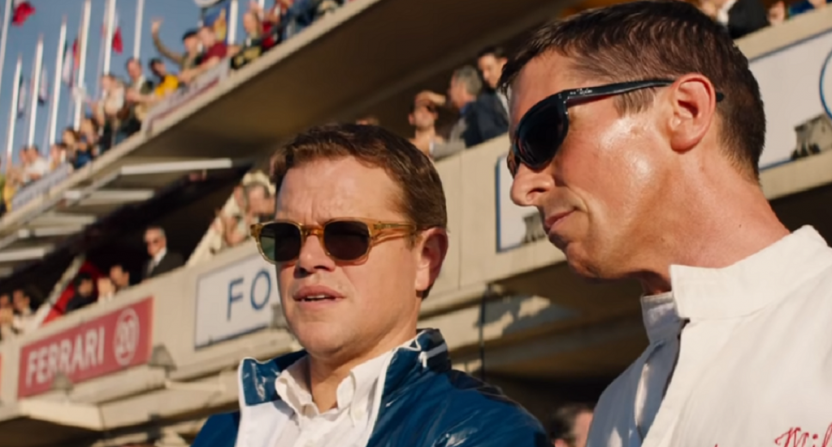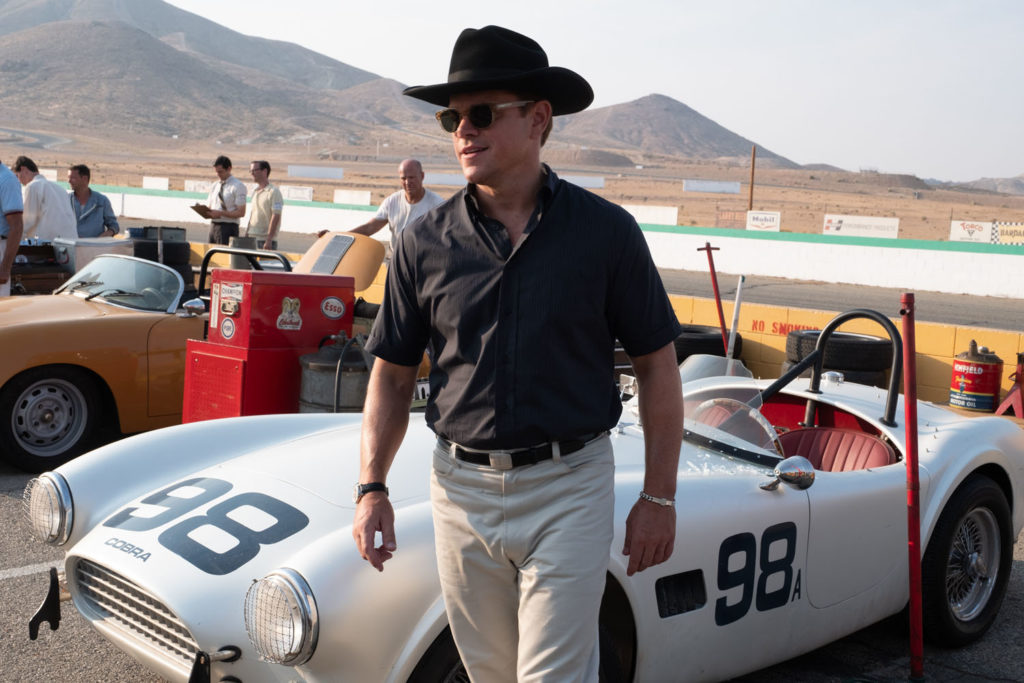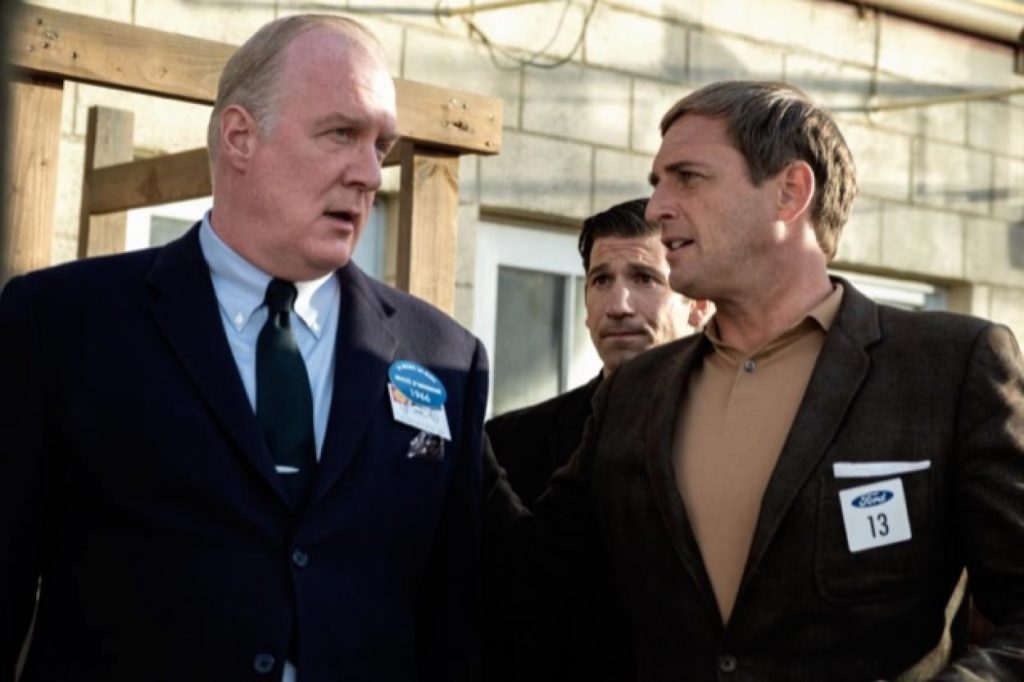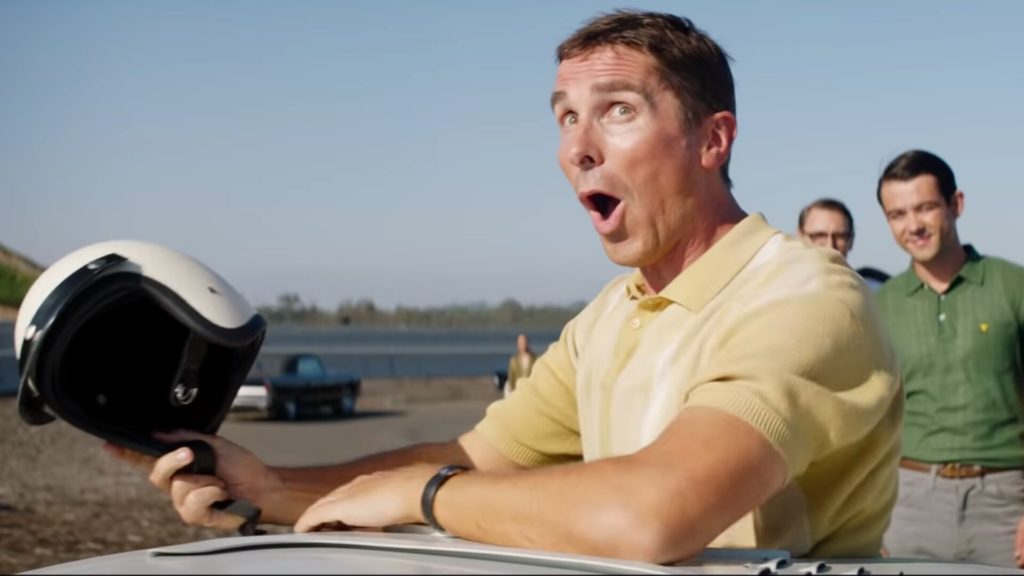
In most European countries, James Mangold’s new movie is being titled “Le Mans ’66”, presumably in an effort to capture the interest of sports-car enthusiasts, particularly those familiar with the famous race that took place in France more than half a century ago. For Americans and other ingrates less versed in racing lore, the film is called Ford v Ferrari, a conveniently alliterative title that pays tribute both to our adversarial natures and our love of underdogs. The movie, which chronicles Ford Motor Company’s obsessive effort to dethrone the prestigious Ferrari from its perch atop the racing world, positions itself as a battle between American revolutionaries and the European establishment. The arts of improvisational creativity and scrappy resourcefulness are (ahem) pitted against the forces of entrenched authority and inflexible traditionalism.
The irony of this framing is that Ford v Ferrari, an unremarkable but by no means unenjoyable picture, is about as traditional as it gets. It’s a crowd-pleasing sports movie through and through, a by-the-book docudrama that embraces conventionality and avoids risk. Yet Mangold, a skilled craftsman whose prior feature was the decidedly unorthodox Logan, demonstrates that templates are durable for a reason, and he follows this formula (one?) with a gratifyingly light touch. He doesn’t so much steer you around the curves as trick you into thinking that the curves even exist, all the while quietly affording you the easy pleasures of the straightaway.
Money can’t buy greatness, the former racing legend Carroll
Shelby (Matt Damon) tells sharply dressed Chrysler president Ford
executive Lee Iacocca (Jon Bernthal). Fair enough. But it can still make things
look better, and Ford v Ferrari doesn’t
waste a cent of its $100 million budget, with Mangold lavishly recreating the ’60s
as a jocular era of wide-brimmed hats, pinstriped suits, and roaring engines
filled with cheap gasoline. Money can make things sound better too; the design
team here has clearly paid painstaking attention to every shift in gear, rev in
throttle, and squeal of rubber meeting road.

Most of all, it can buy movie stars. Playing Shelby as a past-his-prime racer whom Ford recruits to lead a team to topple those Ferrari snobs at Le Mans (a 24-hour endurance race renowned for its deadly corners and difficult elements), Damon is paired with Christian Bale, who portrays the volatile driver Ken Miles. It’s a deeply fruitful partnership. Damon, drawing on the same relaxed charm and gritty decency that he brought to The Martian, is the film’s quiet emotional anchor, locating notes of pathos as Shelby fights to reconcile the bravado of his youthful spirit with the challenge of negotiating corporate bureaucracy. He’s so casually convincing, you almost don’t realize how good he is, partly because he leaves most of the fun stuff to Bale, who—70 pounds slimmer than he appeared as Dick Cheney in Vice—conceives Miles as a classically irritable genius; he’s the kind of guy who knows he’s the best in the business and is frustrated that nobody else seems to understand this. (The dual star power on display recalls a similar complementary team-up from earlier this year: the volcanic energy and sly charisma of Leonardo DiCaprio and Brad Pitt in Once Upon a Time in Hollywood.) The movie’s best, most effortless scenes feature these two actors talking, bickering, scheming, and fighting; when they get into a scrap on Miles’ front lawn and his Supportive Wife (Outlander’s Caitriona Balfe) cheerfully plops down a lounge chair to watch, she’s an obvious surrogate for the audience.
Shelby and Miles may have their share of disagreements, but they’re both artists, wielding innate gifts of intuition and imagination. That places them in natural tension with the honchos at Ford, who also crave victory but who nevertheless insist that everything be done on their terms. This results in repeated collisions between the top brass and Miles, whose strutting braggadocio raises concerns that he isn’t a “team player”, with Shelby forced to play the role of peacemaker. (Mocking Ford’s experience with NASCAR, Miles points out that the track at Le Mans demands more than constantly turning left.) European title aside, the film might more aptly be called Ford v Ford.
And it is here where the movie’s engine doesn’t run as smoothly as it might have. The supporting characters—that is, the various suits who constitute Ford’s upper corporate echelon—are granted little in the way of personality or dimension. Iacocca is a nice guy. Henry Ford II (Tracy Letts) is not a nice guy, though his meanness stems more from lifelong insecurity than actual malice. Leo Beebe (Josh Lucas), Ford II’s top lieutenant, is a very nasty guy, and he becomes both Miles’ chief foil and the film’s cartoonish villain.

It’s a little tedious. The screenplay, by Edge of Tomorrow writers Jez and John-Henry Butterworth, along with Jason Keller, goes to great lengths to reassure you of Shelby and Miles’ mutual brilliance, and of their counterparts’ commensurate ignorance. At one point, Shelby’s lead engineer Phil Remington, played by Ray McKinnon as a salt-of-the-earth type whose instinctual know-how automatically trumps the Ford company’s more advanced methodologies—when someone encourages him to use a computer, he responds by asking for Scotch tape—solves a problem by hammering a door with a giant mallet. It’s a funny enough scene, but it also taps into the film’s bluntness, the way it bludgeons you with its clumsy dichotomy of schmucks and savants.
Of course, Ford v Ferrari is a sports movie, which means it spends a good deal of time on the racetrack. Mangold’s handling of the racing scenes is eminently competent, which is to say he makes them modestly compelling. In theory, the spectacle of the auto race—the speed of the vehicles, the derring-do of the drivers, the rush of excitement as one car attempts to pass another in close quarters—should lend itself well to cinema. But give or take the opening of Baby Driver, the act of driving is a fundamentally static and repetitive activity; there are only so many ways for a director to zoom in on a speedometer or deliver a close-up of a yanked gearshift or display boots mashing down on pedals. Thanks to disciplined editing—the film runs two-and-a-half hours but never feels baggy—the racing sequences are suitably energetic (not to mention defiantly loud), but their customary thrills never approach the movie’s more inspired delights, as when Shelby suddenly decides to take command of a company plane to the horror of its terrified passengers, or when Miles ruthlessly eviscerates the design of Ford’s prized new Mustang. In this sense, Ford v Ferrari would make a fine double feature with Rush, another sports drama whose strong performances (particularly by Daniel Brühl) helped elevate its boilerplate approach.

The movie opens with Shelby narrating about a sort of mystical experience, the uncanny sensation that grips a driver when he’s in absolute control of his craft, so that the surrounding world simply melts away. Despite the sturdy quality of its execution and the high caliber of its acting, Ford v Ferrari never reaches that level of transcendence. It is streamlined, purposeful, and effective—the kind of product that Henry Ford II would have been proud of, and which would have left its heroes wanting a bit more.
In its final stretch, however, the movie acquires a shiver of melancholy that, if not exactly in keeping with its prior buoyancy, nevertheless lends it a certain power. This is less a nervy creative decision than a stubborn consequence of history, which does not always follow the arc of a fairy tale. Still, it packs a punch. For most of its pleasurable running time, Ford v Ferrari resists rattling its audience, preferring to proceed in a soothing straight line. But in the end, the tragedy of real life compels it to finally take that left turn.
Grade: B
Jeremy Beck is the editor-in-chief of MovieManifesto. He watches more movies and television than he probably should.
